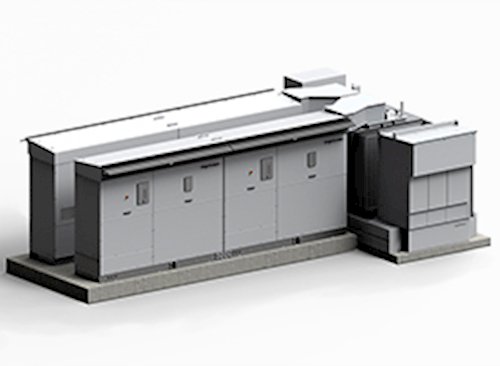Optimizing solar energy involves strategic considerations in the placement and operation of inverter stations. These stations, pivotal for converting direct current (DC) generated by solar panels into usable alternating current (AC), also play a crucial role in maximizing the efficiency, reliability, and integration of solar energy systems with the grid. Here’s how strategic placement and operation of inverter stations can significantly enhance solar energy optimization:

Strategic Placement of Inverter Stations
- Proximity to Solar Panels: Placing inverter stations close to solar panels reduces DC power loss that occurs during transmission over long distances. Shorter cable runs between panels and inverters minimize resistive losses, ensuring that a higher percentage of the generated electricity is available for conversion and use.
- Accessibility for Maintenance and Monitoring: Easy access to inverter stations is essential for routine maintenance and quick response to any operational issues. Strategic placement that considers maintenance accessibility can reduce downtime and enhance system reliability.
- Consideration of Environmental Conditions: The environmental impact on inverter efficiency and longevity is significant. Placing inverters in locations that mitigate exposure to extreme temperatures, moisture, and dust can improve their performance and extend their service life. This might involve shaded or partially enclosed spaces that are still well-ventilated.
- Integration with Existing Infrastructure: When integrating solar energy into existing buildings or infrastructure, inverter stations should be strategically placed to leverage current electrical systems and pathways. This approach can reduce installation costs and facilitate easier connection to the grid or building’s electrical system.
Optimizing Operation of Inverter Stations
- Advanced Maximum Power Point Tracking (MPPT): Utilizing inverters with advanced MPPT technology optimizes the power output from solar panels by continuously adjusting to find the maximum power point, especially under varying weather conditions. This ensures that the solar panels operate at peak efficiency, maximizing energy harvest.
- Smart Inverters for Grid Support: Smart inverters can dynamically adjust their output and provide ancillary services such as voltage regulation, frequency control, and reactive power support. By responding in real-time to grid needs, smart inverters enhance the stability and resilience of the electrical grid, facilitating higher penetration of solar energy.
- Energy Management and Storage Integration: Inverters that are part of an integrated energy management system can decide when to store energy, use it onsite, or export it to the grid based on real-time data and energy prices. This not only optimizes energy use and cost but also improves grid reliability.
- Remote Monitoring and Predictive Maintenance: Implementing remote monitoring and diagnostics allows for the continuous assessment of inverter performance and early detection of potential issues. Predictive maintenance can be scheduled to prevent unexpected failures, reducing downtime and optimizing system performance.
- Firmware Updates and Configuration Adjustments: Keeping inverter firmware up to date is crucial for maintaining optimal performance and compatibility with evolving grid standards. Remote configuration adjustments can also adapt the system to changing operational conditions without the need for physical alterations.
Conclusion
The strategic placement and operation of inverter stations are key factors in optimizing solar energy production. By considering factors such as proximity to solar panels, environmental conditions, and integration with existing infrastructure, along with leveraging advanced technologies for operation and maintenance, solar energy systems can achieve higher efficiencies, greater reliability, and better grid integration. As technology advances, the role of inverters in optimizing solar energy will continue to evolve, further enhancing the potential of solar power as a cornerstone of sustainable energy portfolios.
